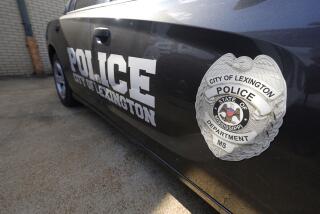Boston Revives Some Painful Memories : Recent Violence Recalls Cityâs Deep-Seated Racial Problems
BOSTON â Three separate, recent outbreaks of violence, including one that ended in the stabbing death of a 17-year-old youth, have reminded Boston of its deep-seated racial problems.
âThere has been a continuing problem of racial tensions in Boston,â said Martin A. Walsh, regional director of the Justice Departmentâs Community Relations Service. âThereâs an undergirding of intolerance and inhospitality and it manifests itself.â
In a recent survey of 200 people who work in civil rights and community programs, 22% said they believed race relations had worsened in the last three years, 15% said they had improved and 55% said there was no change, said James Jennings of the University of Massachusetts in Boston, who coordinated the poll.
âHas to Be Recognizedâ
Jennings, dean of the College of Public and Community Services, said the recent racial incidents âpoint to the continuing problem of racism in the city of Boston. Racial violence has to be recognized as a facet of racism.â
About a quarter of the surveyâs respondents said they believed that the cityâs business leaders were doing a poor job of combatting racism, while 29% said the same thing about the news media.
The college recently held a forum with city officials to discuss the latest incidents:
--On June 1, a 17-year-old was fatally stabbed in a Boston Common subway station during a fight between four black youths and four white youths.
--On May 25, about 30 whites allegedly attacked several Vietnamese at their home in South Boston with rocks and bottles. Eight young people, including a juvenile, face charges of property damage and civil rights violations.
--Two days later, four Cambodian refugees living in East Boston allegedly were attacked by a group of 15 to 20 whites. Police arrested a 21-year-old man and charged him with allegedly hitting a refugee in the head with a lead pipe.
And an incident involving a scuffle last month between a Chinese immigrant and a police officer produced an uproar in the cityâs large Chinese community.
Walsh, co-chairman of the Boston Civil Rights Coalition, said the city has to deal with the causes of racism.
âToo often, too many of these problems come up because the non-law enforcement institutions are not doing their job,â he said, mentioning religious organizations, schools, social service agencies and clubs.
City residents also are to blame, he said.
âItâs reflected in the table talk--how people talk about people who are different,â he added.
Walsh has held his post since 1974, when racial disturbances erupted after a federal judge forced city schools to desegregate. A racially polarized city expressed its anger over the ruling, with some residents hurling rocks at school buses.
Other racial incidents have happened since, and many blacks and whites say they donât feel welcome in some sections of the city of 560,000.
Mayor Raymond L. Flynn admits that Boston, which has about 126,000 blacks and 42,000 other minority group members, has a racial problem. But he said progress has been made.
âI think the people want to see a city that is united,â said the mayor, who has made racial harmony one of the themes of his administration.
âIf we can continually make progress on jobs, education . . . economic opportunities and housing, we can go a long way in making Boston a city that is open, accessible and livable and has one set of rules for all,â Flynn said.
Walsh said whites in the cityâs working-class neighborhoods may regard the growing Southeast Asian population as intruders and believe âtheyâre ripping off the systemâ by accepting food stamps, welfare and college grants.
Peter Kiang, program director of the Asian-American Resource Center in the cityâs Chinatown section, agreed that Boston is âa very turf-conscious city.â
Kiang largely blamed the Southeast Asiansâ problems on federal policy that encouraged the immigrants to settle throughout the city, rather than in clusters, âwithout preparing either those neighborhoods or the refugees themselves.â
Ed Crotty of the state Office of Refugee Resettlement said the availability of affordable housing often determined where refugees lived.
According to Boston police, 43 incidents of racial violence against Asian immigrants were reported last year, compared with 31 in 1983. So far this year, 12 such incidents have been reported.
Both Kiang and Walsh said they believed there have been many more incidents involving Southeast Asians than have been reported.
The 1980 federal census found slightly more than 14,000 Southeast Asians living in Boston. Kiang said the number has increased substantially since then, but he said no exact count was available. Crotty said about 8,000 Southeast Asian refugees settled in Boston in the past decade.
On May 1, a vice squad detective said he struck a Chinese immigrant, Long Kuang Huang, because he was resisting the officerâs attempt to arrest him for allegedly soliciting a prostitute. Long, who speaks no English, and several bystanders claimed the immigrant offered no resistance.
Long, 56, was hospitalized for several days after the arrest in the Chinatown section. Since then, Flynn and police officials have held numerous meetings with the angry Chinese community.
âIf Chinese people are not safe and secure in Chinatown, then there is no place else to go,â Kiang said.
More to Read
Sign up for Essential California
The most important California stories and recommendations in your inbox every morning.
You may occasionally receive promotional content from the Los Angeles Times.










